on shamanism from the blog called A GRAMMAR OF MATTER

The Lost World: From Cosmic Freedom to Social Discipline
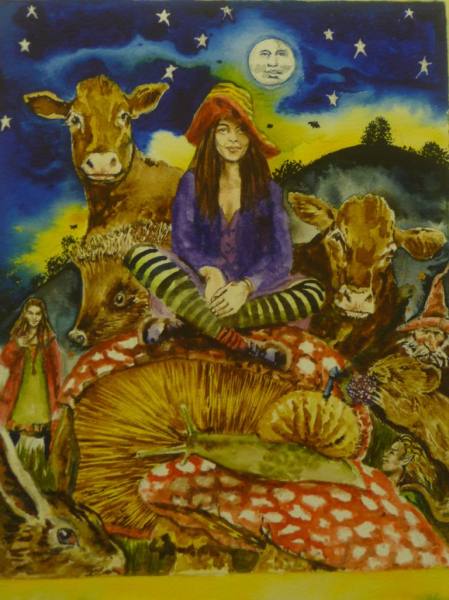
Doing an online search for The Tibetan Ukrainian Mountain Troupe last night, I came across this delightful picture here. I’m guessing it’s from about 1982-83. To me it says everything about the utopian dreams of an ‘alternative culture’, which saw its last hurrah with the Stonehenge Festivals of the early 1980s and the Cosmic Freedom Festival at Greenham Common in 1982. It was part of a festival circuit which saw urban squatters take to the road in battered buses and lorries in the summer. This movement was dealt a dolorous blow in 1985 with the Battle of the Beanfield, an act of state brutality surely sanctioned at the highest level, partly in revenge for the incursion at the projected cruise missile base at Greenham Common, which saw frantic phone calls between Downing Street and Washington – at least, according to the gossip tree at the festival. To paraphrase René Riesel, social submission has advanced at a frightening pace since then, such is the further intensified dictatorship of the market, facilitated in no small part by the devastating defeat inflicted upon the Miners in 1985.
“There must be some kind of way out of here.”

The Ecology of Soul Flight: From Siberia to the Solent… and Back
November 18, 2013The knowledge that the migratory Dark-bellied Brent Goose – currently overwintering in the Solent – has travelled all the way from its summer breeding grounds on the Taimyr peninsula of northern Siberia, has led me to look at the place of geese in the ‘shamanic’ outlook on the world of communities in Siberia and Central Asia.
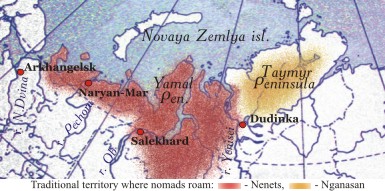
Map taken from this site.
What has become evident to me is that it is this very migratory behaviour of certain waterfowl, such as geese, cranes and swans, which has lent these birds such a centrality in the diverse shamanic cosmologies of Eurasia.
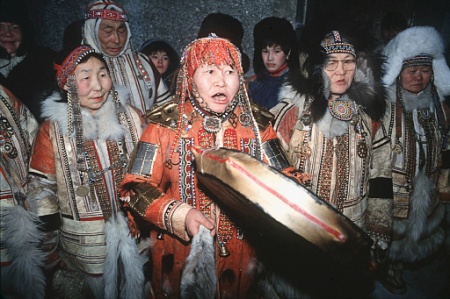
A female Nganasan shaman from the Taimyr Autonomous Area performing a ritual (from here)
A highlight of a visit to the Ethnographic Museum of the Peoples of Siberia in Ulan Ude, Buryatia in 1995 was the open air re-creation of an Evenki (Tungus) village, featuring a shaman’s house very similar to the one pictured on a Russian postcard from about 1911-1914, in front of which this female shaman is drumming (from here).
A.F.Anisimov, in his ‘The Shaman’s Tent of the Evenks and the Origin of the Shamanistic Rite’ has written the most detailed and influential study of the complex architecture of the Evenk shaman’s house and its surrounding structures and imagery. The museum reconstruction allows visitors to move around this materialisation of the three-tier shamanic cosmos, albeit divorced from the transformative practices which would bring this world to life.
I was impressed by the rows of tall, slender poles with carved wooden birds mounted on the top. Looking at the notes I made following the visit to the museum, I see that I have written that these birds are ‘seekers after the soul of the person to be healed’ by the shaman.
I’ve had a photocopy of Roberte Hamayon’s voluminous study of Siberian shamanism – La Chasse à L’Âme (The Hunt of the Soul) – gathering dust for many years. Digging it out for the first time in years to look for something else, I found this drawing on page 314. It shows the Evenk shaman’s house with rows of poles mounted with birds and other animals leading from it. Hamayon’s accompanying text explains the significance of migratory birds to shamanic cosmology in a way I had not realised before, illuminating a number of diverse phenomena which I hope to explore in further posts.
Very roughly translated, Hamayon states that in the majority of Siberian societies, the great rituals took place in the summer season , during the stay of the migratory birds, marking their arrival and their departure (looking forward to their return the following year). It can be said that during the winter the shaman lacks the power to shamanise effectively because the birds have not returned to reinvigorate him/her. These migratory birds (swans, geese, cranes…) seem to play the rôle of carriers (porteurs), not of countable, individual souls, but of a ‘life force’, a soul-substance underlying all animate being. The birds’ return coincides with the thaw at the end of the scarcity of winter, materialising the idea of renewal.
This accords with the theme of good fortune returning with migratory waterfowl, woven into this Anatolian shepherd’s bag
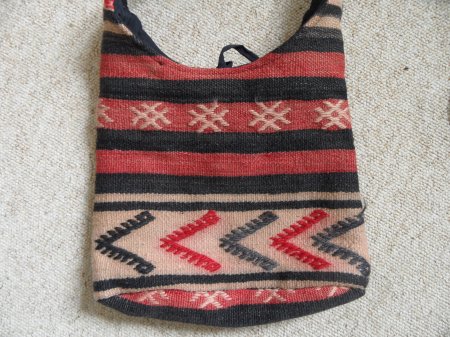
A shepherd’s bag woven by nomadic tribespeople of central Anatolia in modern Turkey; a design from Kayseri/Tomarza village. The horizontal ‘V’ pattern represents the return flight of migratory cranes, symbolic of good news, while the cross-hatched symbols are the nests of ‘holy birds’. (Picture: Simon Crook. I’m grateful to Mr Bilal Olgun for explaining the symbolism woven into this bag).
Looking for images for Nganasan shamans and their drums, I found the cover of this CD which has a picture of a Nganasan shaman bearing a drum which appears to have two geese in flight painted on it.
Watching the Dark-bellied Brent Geese this winter, whether they are flying overhead, grazing on the mudflats when the tide is out, or bobbing on the water when the tide is in, I do feel a sense of the interconnectedness of all things, near and far, from the Solent to Siberia… It’s nice to have a bit of Taimyr in Tipner! As a friend suggested, it seems to capture the imagination more than the civic ‘Portsmouth twinned with Duisberg’ type thing: ‘I would imagine that the experience of seeing a bird return would be felt identically by you and your counterpart in Siberia. A non verbal soul exchange, each teaching a little you have learnt over the year to the other’.
References
Roberte Hamayon 1990 La chasse à l’âme: esquisse d’une théorie du chamanisme sibérien Société d’ethnologie, Université de Paris
A.F.Anisimov, ‘The Shaman’s Tent of the Evenks and the Origin of the Shamanistic Rite’, Henry N. Michael, ed., Studies in Siberian shamanism, Toronto, 1963.

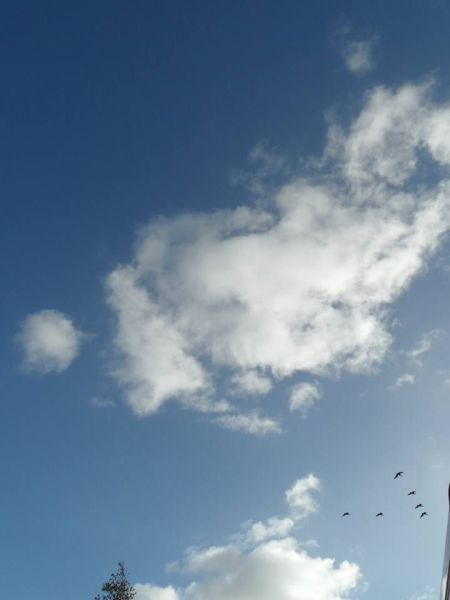
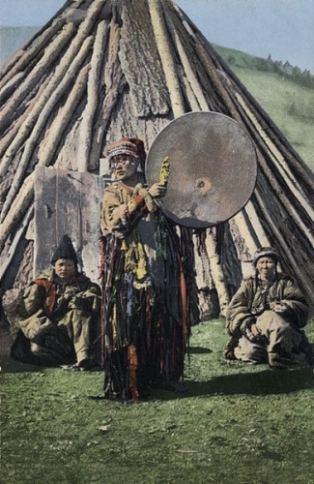
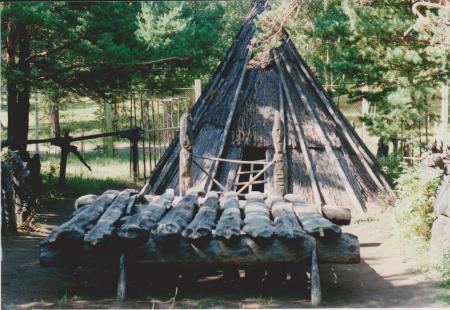
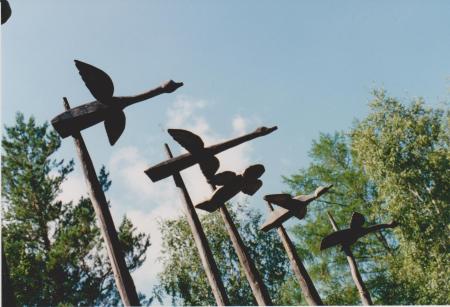
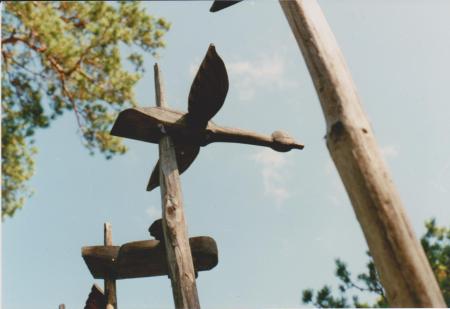
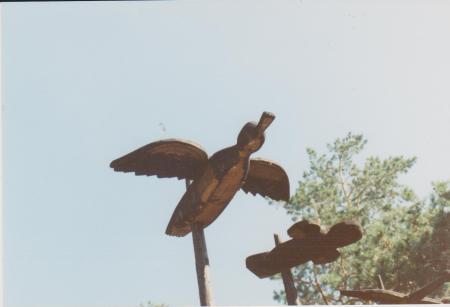
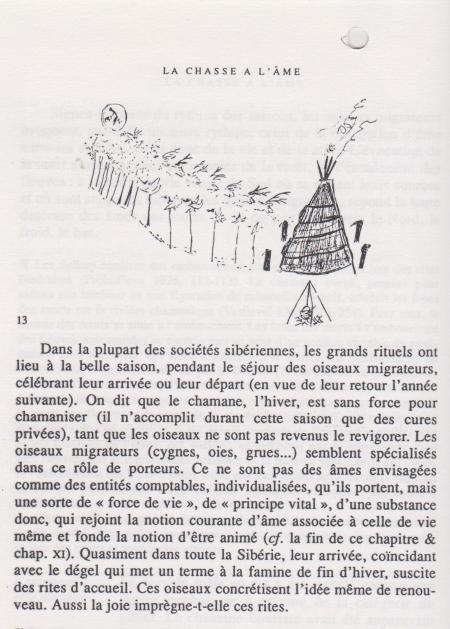
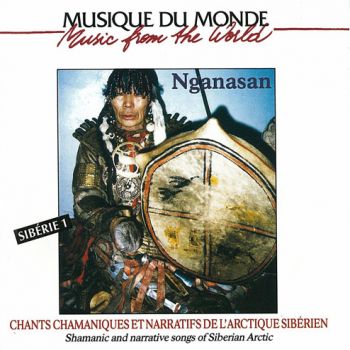
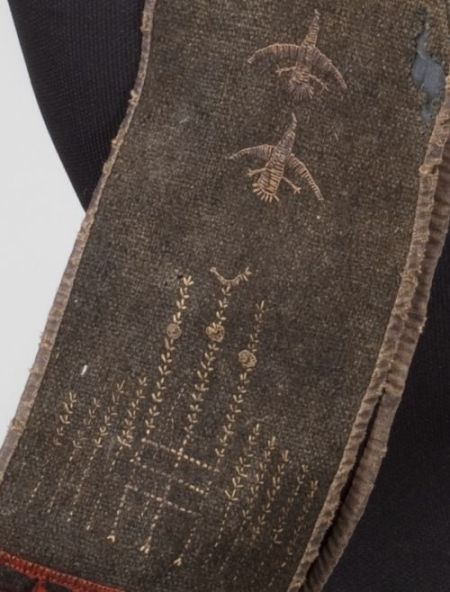
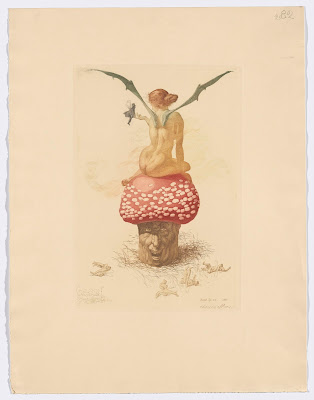


Comments
Post a Comment